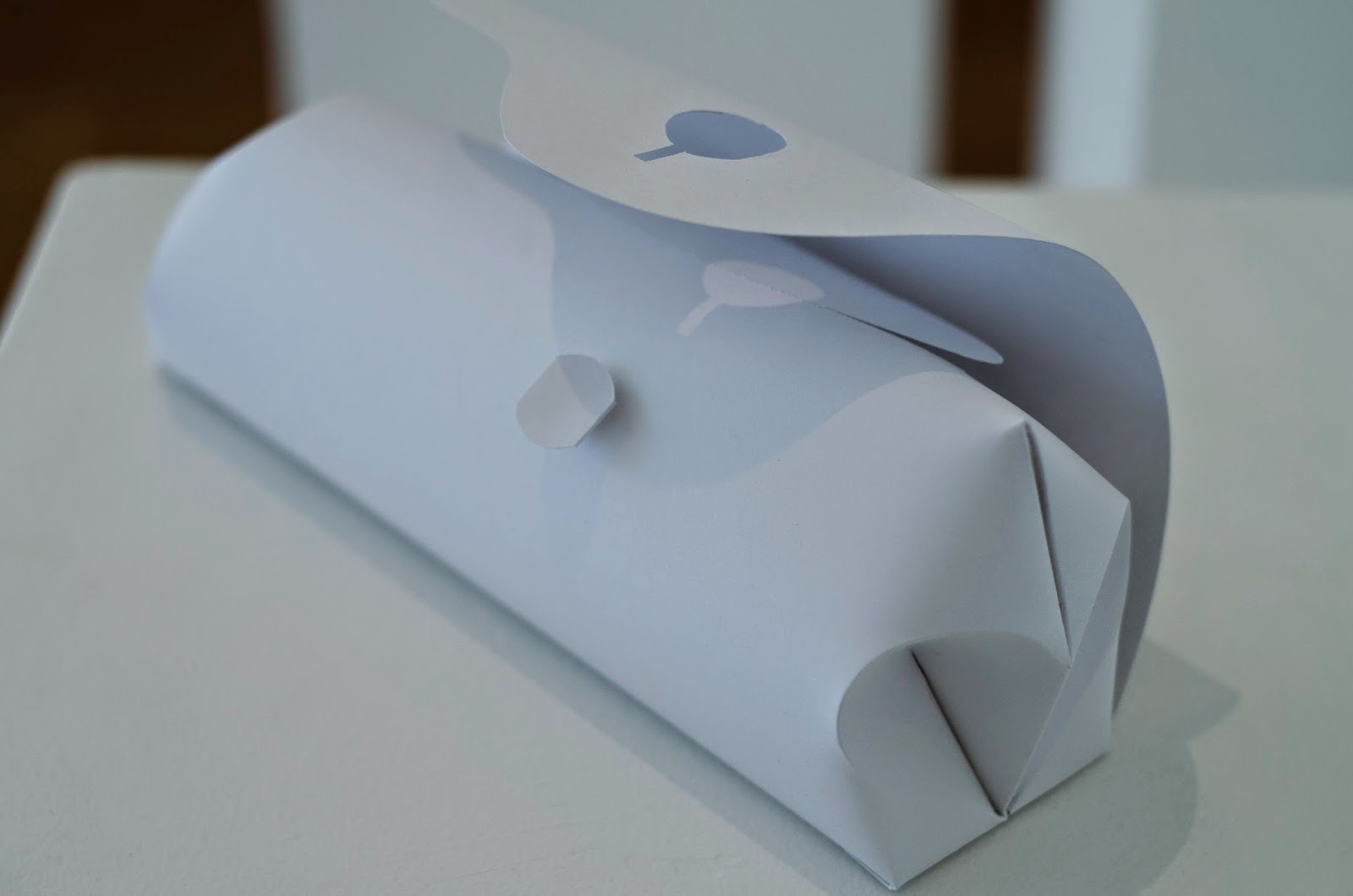Introducing one artist for May-June 2014
Daniel Downing
 ‘Pollock’s Tissue box’
‘Pollock’s Tissue box’
Daniel Downing, 2013,
250gsm white card (single folded
sheet)
This piece is part of a project (Form more worthy of Pollock) that forms
an antithesis to the design industry’s foundations, deconstructing the
modernist square box of commercialism, replacing it with an organic packaging
style. The focus of the work places greater value on form, while sacrificing
commercial practicalities, yet maintaining essential function in new designs,
that speak new language. The project was also a lesson on shape and form
through the experimentation process of manufacturing three dimensional
constructs from two dimensional media.
What would happen if we designed
packaging as artists instead of designers, forgetting the ‘price of design’ and
making the work more informed by the form? If we discard function entirely, is
it still packaging? Must we separate art and design?
Pollock’s Tissue box started as a package
concept to hold a bottle of drying oil or olive oil, then I dropped the idea
for a while before realising the potential for a tissue box and the obvious
association with Demand’s ‘Pollock ghost’.
Reading about Pollock’s efforts to convince people that he was a cowboy
alerted me to the potential of this design, and the need to revisit the
experiment. The flap rolling over the cylinder reminded me of a horse saddle,
which became the premise of inspiration from Pollock the man, NOT his art. In
addition to his cowboy alter-ego, Pollock liked fast cars, and as most art
lovers know, he died in one. The Pollock tissue box transforms into an almost
macabre long slender coffin with a car grill and headlights at the front, tail
lights to the rear, and a saddle slung over the middle.
Thomas Demand: and the ghost of Jackson Pollock
Thomas Demand is a German conceptual
artist and art teacher known for his photographs of hyper-realistic recreations
of known places with strong political or social importance; like the Oval
office at the American Whitehouse and Jackson Pollock’s barn studio. Demand
questions if souls exist in reproductions of special places, “recreating spaces
and images over and over brings them back as icons” , like the Catholic
crucifix and fat Buddha statues. While photographing his recreation of Jackson
Pollock’s studio in Barn/Streune,
Demand found the edges of the image were blurred, he retried and achieved the
same unexpected result. In reaction to the movement of his work each time he
attempted to photograph it, he questioned if Pollock’s ghost was trapped in the
work? “To sentence Pollock’s soul into a Kleenex box was like locking a Jeanie
into a beer can.” – What a delightful concept for a sculptural packaging
design!

No comments:
Post a Comment